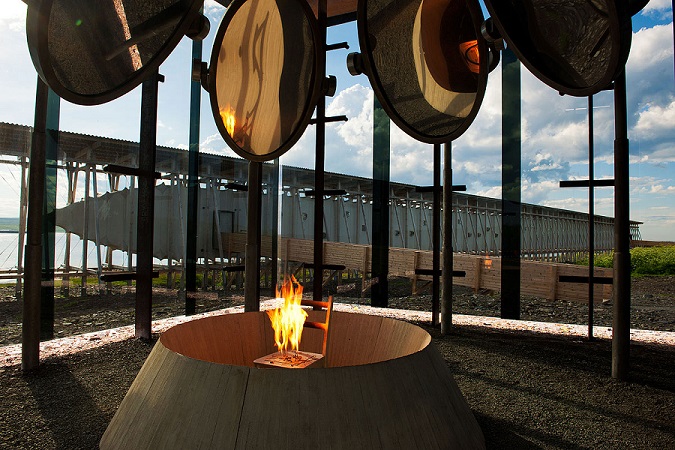Summary | Excerpt | Reviews | Beyond the Book | Read-Alikes | Genres & Themes | Author Bio

This article relates to The Mercies
 For such a small and remote community, Vardø has endured more than its share of tragedy. In 1617, the small fishing town found at the easternmost point of Norway was hit by a violent storm. Its arrival was so sudden and devastating, it all but wiped out the male population, leaving behind a community of shell shocked women and children. Their journey through grief, and their attempt to adjust to a whole new way of life, was made all the more difficult by the threat of witch hunts spreading across Europe at the time. This scenario is evocatively captured in Kiran Millwood Hargrave's novel The Mercies.
For such a small and remote community, Vardø has endured more than its share of tragedy. In 1617, the small fishing town found at the easternmost point of Norway was hit by a violent storm. Its arrival was so sudden and devastating, it all but wiped out the male population, leaving behind a community of shell shocked women and children. Their journey through grief, and their attempt to adjust to a whole new way of life, was made all the more difficult by the threat of witch hunts spreading across Europe at the time. This scenario is evocatively captured in Kiran Millwood Hargrave's novel The Mercies.
Witch trials (which are estimated to have taken anywhere from 16,000 to 50,000 lives in Europe alone) originated in the 15th century, but hit their peak in the 17th century when they spread all across the European continent, including Scandinavia. Witch hunters made the rounds, called upon by the Church and the governing bodies of individual nations to intervene where non-Christian beliefs were prevalent. The scrutiny that fell on Vardø was particularly harsh for such a sparsely populated expanse of land. Its geographical seclusion, largely female population, and conflict between Sámi and Christian cultures made it an ideal target, presenting a ripe opportunity for the Church to make an example of its people and showcase their increasing power.
Any woman in the wider Finnmark region (in northern Norway, now known as Troms og Finnmark) who defied the strict role set out for her by society was at risk of accusation, as was anyone who shunned Christian teachings in favor of traditional Sámi ways of life. Employing the "trial by water" technique, those the local government or clergy considered suspicious were bound hand and foot and thrown into the sea. They believed a witch would float, meaning she must be burned at the stake, while an innocent woman would sink, meaning vindication in spite of a watery end. In short, escape was virtually impossible.
The modern gaze allows us to see witch trials for what they were: an irrational response to fear of the unknown, and a horrifying abuse of power, employed as a means of stamping out difference and defiance. To put the scale of Vardø's losses into perspective, the Salem Witch Trials in the U.S. saw 200 people accused of witchcraft, resulting in 19 executions, compared to 91 executions in Vardø from 135 accusations.
It seems remarkable then that the suffering and injustice faced by the people of Vardø went largely forgotten for so many years. In 2011, architect Peter Zumthor and contemporary artist Louise Bourgeois sought to honor the trial's victims with a haunting tribute on the site where the majority of the executions took place. Known as the Steilneset memorial, the installation includes a metal chair topped by a perpetually lit flame, the light of the fire bouncing off a series of surrounding mirrors. These mirrors loom like sentinels standing in judgment, reflecting the very worst humanity is capable of. There is also a 400-foot long walkway within a giant silk cocoon, suspended by a vast wooden framework. From each of the 91 windows along this corridor, a lit bulb shines out onto the stark landscape beyond—one for each person wrongfully put to death. Small plaques by the side of the windows immortalize what little information could be gathered about each victim. These help to humanize the statistics, reminding us of the individuality of those affected by the trials, a poignant idea taken and built upon in The Mercies.
Steilnest Memorial photograph by Bjarne Riesto
Filed under People, Eras & Events
![]() This "beyond the book article" relates to The Mercies. It originally ran in March 2020 and has been updated for the
February 2021 paperback edition.
Go to magazine.
This "beyond the book article" relates to The Mercies. It originally ran in March 2020 and has been updated for the
February 2021 paperback edition.
Go to magazine.
Your guide toexceptional books
BookBrowse seeks out and recommends the best in contemporary fiction and nonfiction—books that not only engage and entertain but also deepen our understanding of ourselves and the world around us.